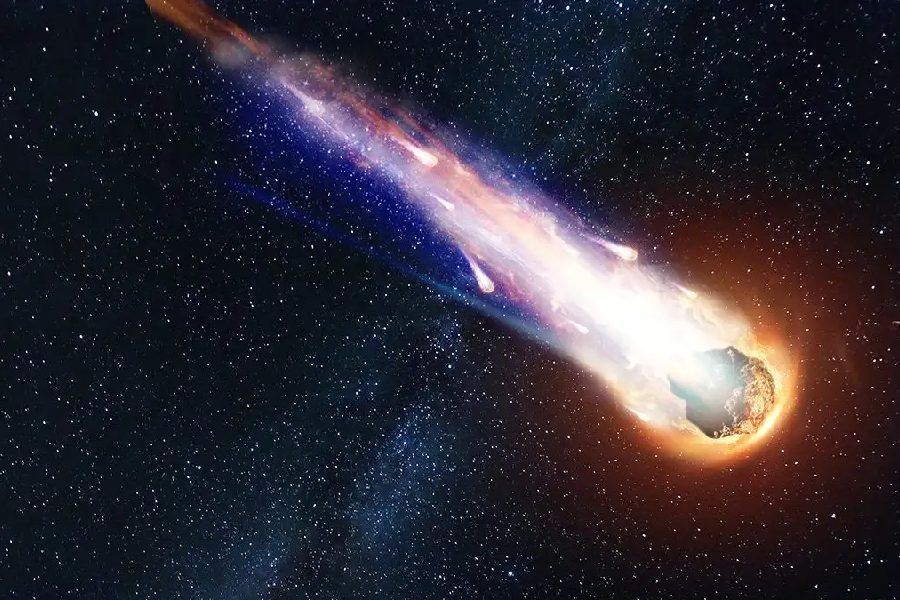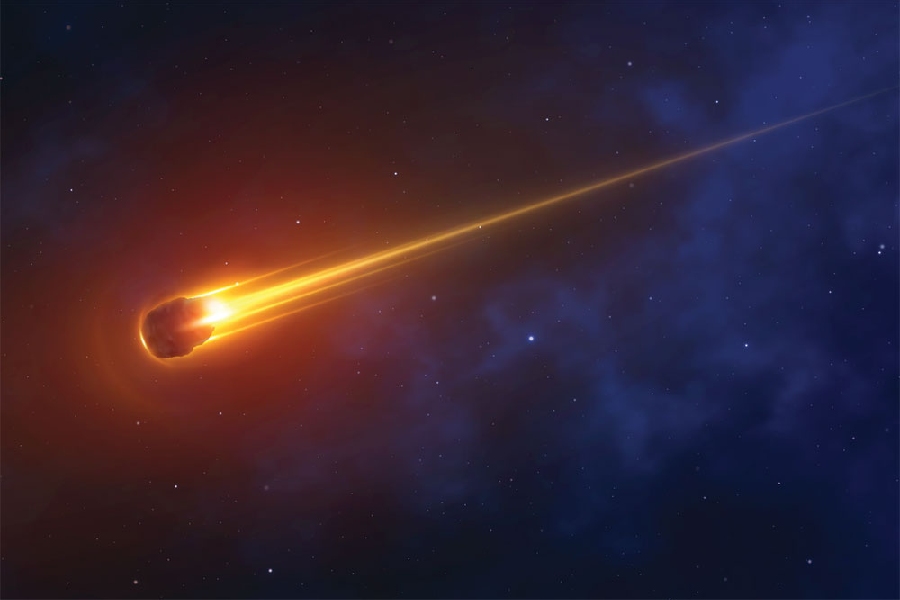Streaking trails of light blast across dark skies as mesmerizing celestial shows captivate star-gazers. But what are these dramatic, fiery phenomena? For millennia, documented accounts describe sights of stars falling from the heavens, lighting up the night in curious visual displays both wondrous and ominous.
Today, science has revealed the true identity of these falling stars that transfix skywatchers. They are space rocks known as meteors plunging towards Earth.
Yet unlocking the secrets of meteors’ varying and bewildering appearances has proven difficult throughout history. Interpreting their visual riddles has been an ages-long pursuit interwoven with astrology, mythology, and superstition.
What does meteor look like? From bright, radiant fireballs to glowing domes, ghostly atmospheric imprints, and even smoke-spewing, bug-like shapes – decipher the cosmic tale of unraveling the visual riddles of meteors and their many guises throughout history.
Let us dive into ancient legends and mythological explanations of meteors dancing across the starry canvas. Compare those fanciful interpretations to modern scientific explanations, deciphering the true nature behind the phantom light shows of meteor phenomena.

What Does Meteor Look Like?
What does meteor look like? Meteors, often called “shooting stars“, appear as bright streaks of light in the night sky. They can vary in color, typically glowing white or yellow, and may leave behind a glowing trail as they streak across the atmosphere.
Meteors are usually fast-moving and brief, lasting only a few seconds before disappearing. Some larger meteors, known as fireballs, can be particularly bright and may even fragment or explode as they burn up in the Earth’s atmosphere.
Brightness and color
Moderately bright meteors are visible even in light-polluted skies, similar to Jupiter’s brightness. More spectacular fireballs can glow brighter than Venus or the Moon before quickly dimming.
Velocity, mass, and composition affect brightness. Faster, bigger, rock-metal meteors shine brighter from extreme heating and ionization.
Meteors emit light colors in a sequence – red, yellow, green, blue, purple – depending on temperature and composition. Iron, magnesium, and silicon make white and yellow; calcium produces orange and blue meteors; carbon and nitrogen cause red; ionized metals result in green and blue. Speed, mass, and angle also affect color.
Velocity and streaks of light
Meteors move at very high velocities as they enter Earth’s atmosphere. As mentioned above, their speeds generally range between seven miles per second to 45 miles per second. But some reach even faster speeds. Initially, meteors accelerate due to gravitational pull as they plunge toward Earth.
The speeds increase until air resistance starts slowing them down. The high speeds cause friction and extreme heating. The heat ionizes air molecules, which then emit photons of light. This glowing air creates the streaks behind meteors.
A typical meteor streak may glow for a few seconds. Smaller meteors make streaks for less than a second. Bigger meteors can create glowing trails for many seconds or minutes.
The glowing streak marks the rapid demise of the meteor. It represents the trail left by the asteroid fragment’s “last breath” before it becomes a meteorite falling dark once more. Since the ionizing wake continues emitting light shortly after the meteor breaks up, the luminous train may persist a bit beyond the meteor’s disintegration but soon fades without the meteor core source.
Fusion crusts on the outer surface
As meteors enter Earth’s atmosphere, friction with the air causes their outer surface to melt and vaporize. The heating temperature can reach over 4500°F. The melted rock materials fuse together.
The melted meteor surface rocks cool into a thin coating when lower in the atmosphere. This forms a smooth, glassy texture around the meteoroid – this coating is the fusion crust.
The fusion crust makes meteorites appear dark on the outside. As lighter elements burn off (ablation), darker minerals accumulate on the heated surface layer, giving it a melted, pitted texture.
Fusion crust as a key identifier
While the surface changes significantly, the unchanged interior remains pristine, allowing studies of early Solar System composition from primitive preserved chemistry and mineralogy.
Since fusion crusts require atmospheric heating, they indicate a meteoroid achieved passage as a meteorite, surviving to land on Earth instead of completely burning up beforehand as a bright fireball meteor.
Furthermore, the tell-tale smooth vitrified texture helps distinguish genuine meteorites from Earth rocks. The glassy exterior crust is evidence of extraterrestrial origins from outer space rather than terrestrial processes.

Meteorite Identification – Size and Weight
Meteorites are rocks from space that survive passage to Earth’s surface. Most come from asteroids and are identified by collectors or scientists. Most meteorites range from microscopic particles up to boulders over a meter across but average around 2-4 inches in size.
Bigger incoming meteoroids make bigger meteorites. Meteorites feel significantly heavier than Earth rocks due to high iron-nickel metal content. Weights average 1-110 pounds for hand samples. Their composition lends meteorites about 3-4 times higher density than terrestrial rocks, which aids identification.
Common types of meteors
Ordinary chondrites
Ordinary chondrites represent the most abundant type of meteorites, comprising about 85% of specimens collected on Earth. They originate from common asteroids. These contain round mineral structures called chondrules embedded in a matrix of iron and silicate compounds.
Originating from primitive asteroids, they formed during early solar system condensation processes like most planetesimals. Ordinary chondrites provide insights into chemistry active as solid bodies first accreted; their melt inclusions additionally inform on solar nebula volatile contents.
Achondrites
Unlike most chondrites, achondrites come from asteroids big enough to chemically differentiate and form igneous rocks like planets. Hence they resemble terrestrial basalts or plutonics.
Achondrites represent progenitor asteroids that experienced heating, allowing the segregation of metals and silicates into layers. Much as Earth separated into core and mantle regions early on, based on elemental markers, scientists can determine conditions for how achondrites formed.
They can determine at what temperature and orbital distance certain achondrite types formed around the Sun. This further informs models of solar system evolution and distribution of matter.
Conclusion
When meteors plunge toward Earth, the incredible friction of entry heats and compresses gases around them. This causes streaking glows across the night sky. Their dazzling yet ephemeral nature has captivated sky-gazers for eons who describe sightings as “shooting stars” and make wishes.
This article has covered details from formation high above to their eventual demise below. These insights enhance understanding of these messengers from distant space.
We hope you now know what does meteor look like and understand the science behind glowing meteors as they cascade through the atmosphere. You also learned about the colors they emit before the rocky remnants land unseen as meteorites.
Understanding the principles behind meteors’ brilliant transformations provides deeper appreciation. This appreciation involves their cosmic origins when glimpsing nature’s celestial fireworks and trails through our air.
